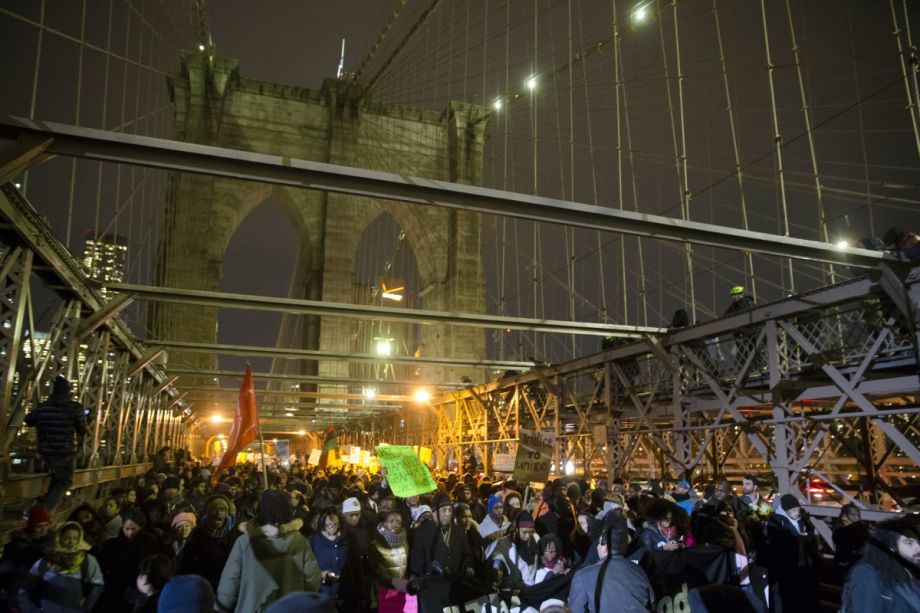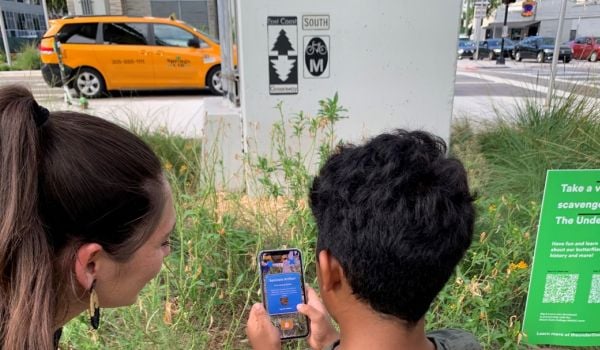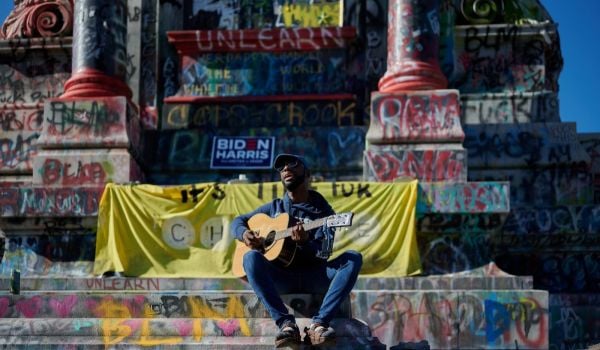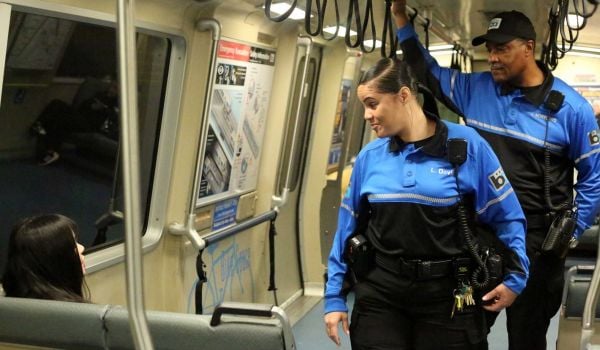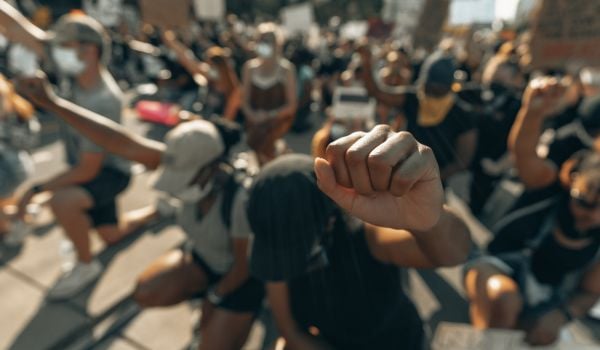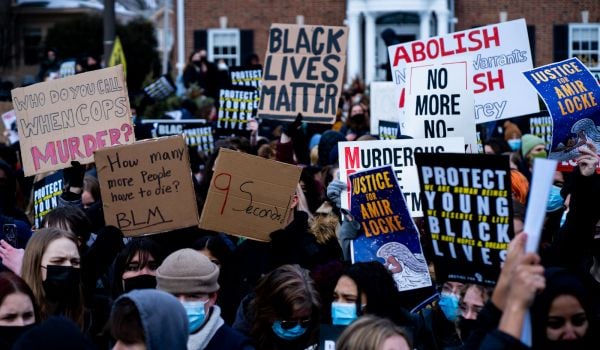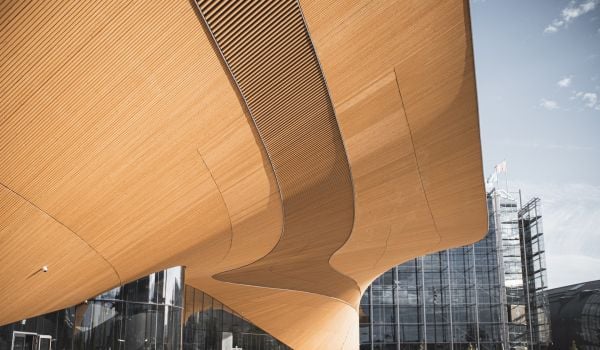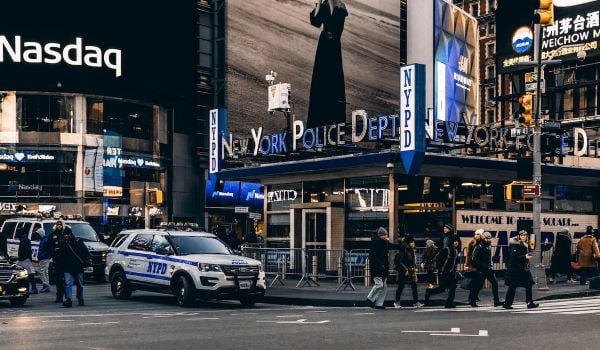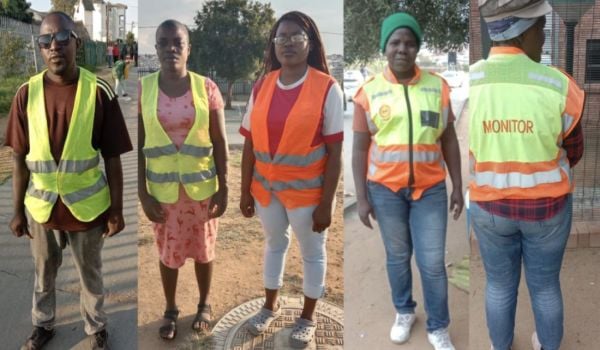Chants echoing in a grandiose train station during the evening commute. A rally in a 150-year-old public square. A human chain that reroutes highway traffic. These are all acts of protest that transform public spaces, and in recent weeks, thanks to the grand jury decisions in St. Louis and New York, city-dwellers across the U.S. have seen, or participated in, these common protest tactics first-hand. Demonstrations are woven through U.S. history, and technological advancements and growing populations are inevitably impacting how we disrupt. Here’s a look at six common techniques and how they play out in cities.
Traditional Rallies/Marches
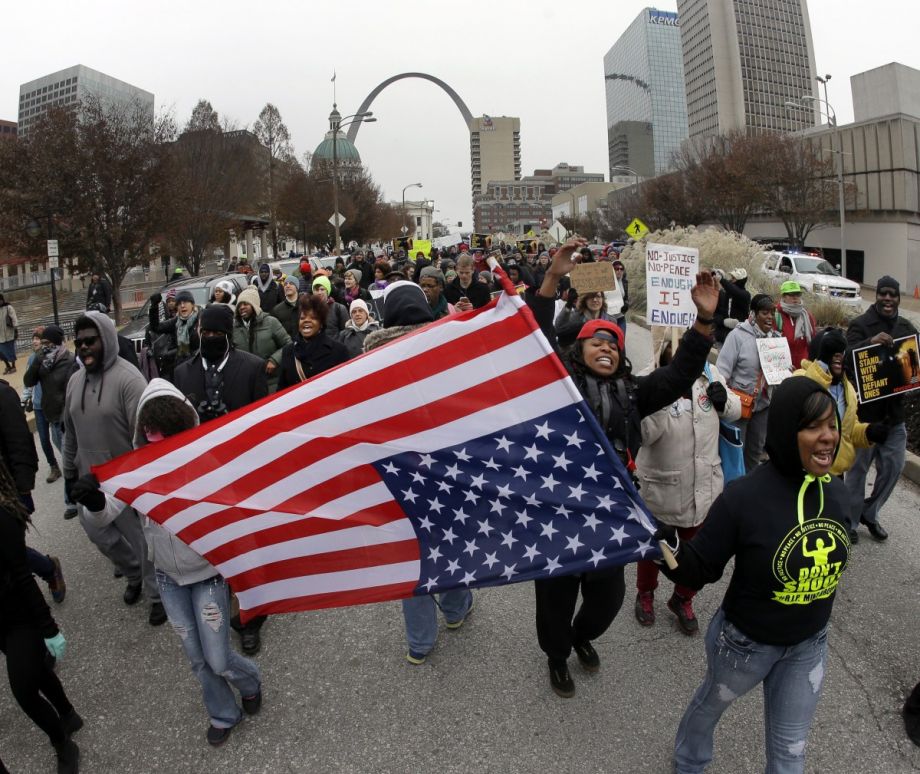
Protesters march through downtown St. Louis on Nov. 26th, over the police shooting of Michael Brown. (AP Photo/Charlie Riedel)
Visibility Target: pedestrians, passersby
Potency: Solidarity is the name of the game when it comes to marches and rallies. There is undeniable power when thousands or hundreds of thousands of humans march side by side, which is why these types of demonstrations prevail. Public spaces and large avenues or boulevards have historically been the “venue,” creating an emotional connectivity between current events and movements from past eras.
Blocking Traffic/Highways/Bridges/Tunnels
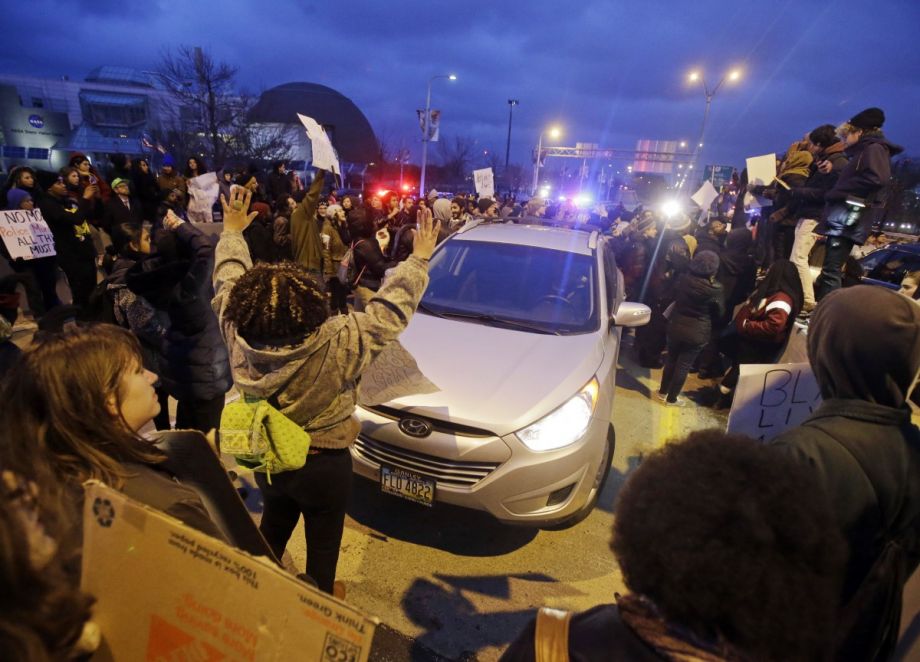
Demonstrators surround a car on Memorial Shoreway in Cleveland on Nov. 25th, in a protest over the police shooting of Tamir Rice. (AP Photo/Mark Duncan)
Visibility Target: drivers
Potency: One of the flaws of marches and rallies is that participants risk preaching to the choir. But by blocking highways, bridges or tunnels, activists are a disruptive critical mass that attracts the attention of people who might be unaware of a cause or are choosing to ignore it.
Die-Ins
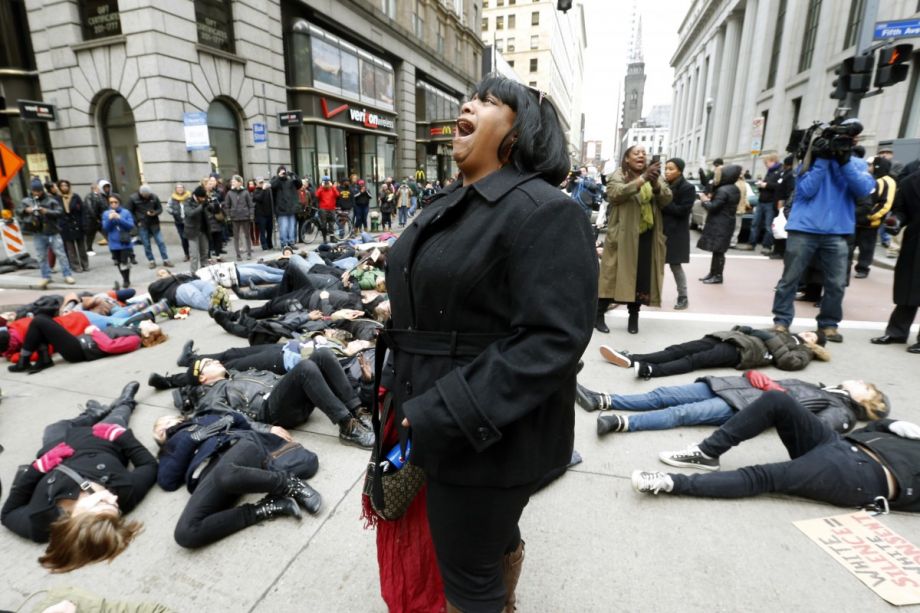
A Pittsburgh die-in on Dec. 4th (AP Photo/Keith Srakocic)
Visibility Target: public transit commuters, passersby
Potency: Die-in imagery is stirring. The recent die-ins dedicated to Michael Brown, Eric Garner, and Tamir Rice have called attention to the human toll of police brutality. Actions in places like Grand Central station and 30th Street Station in Philadelphia targeted local and regional train riders.
Street Art
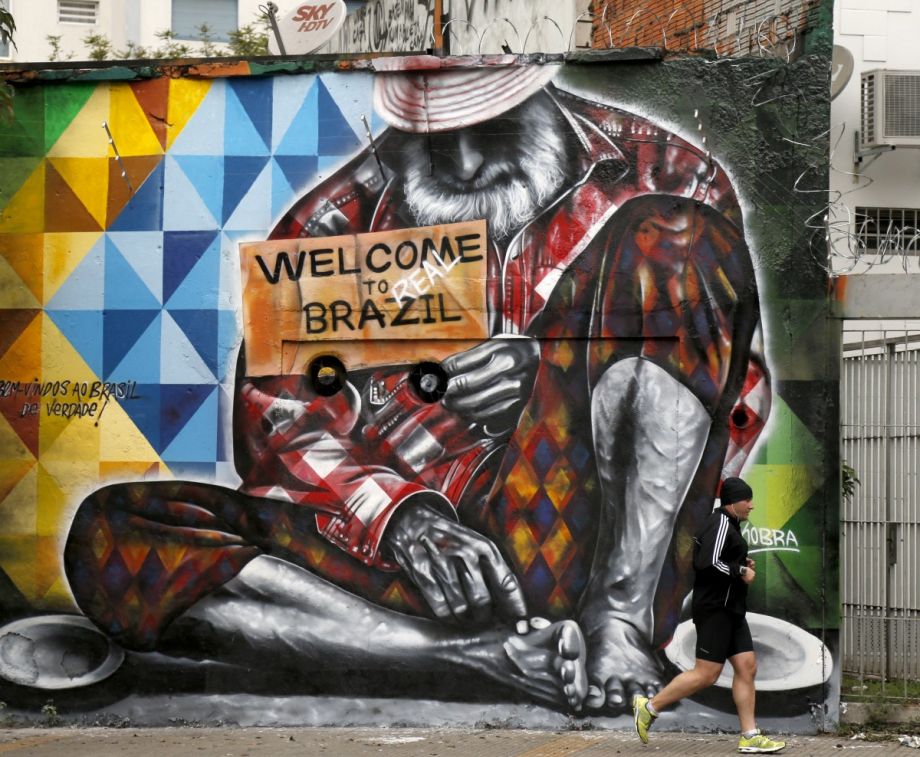
Street art against the 2014 World Cup in Sao Paulo, Brazil (AP Photo/Julio Cortez)
Visibility Target: passersby, neighbors
Potency: Street art is more lasting than other forms of protest — and can even have the more notable effect of beautifying neighborhoods.
Hashtags
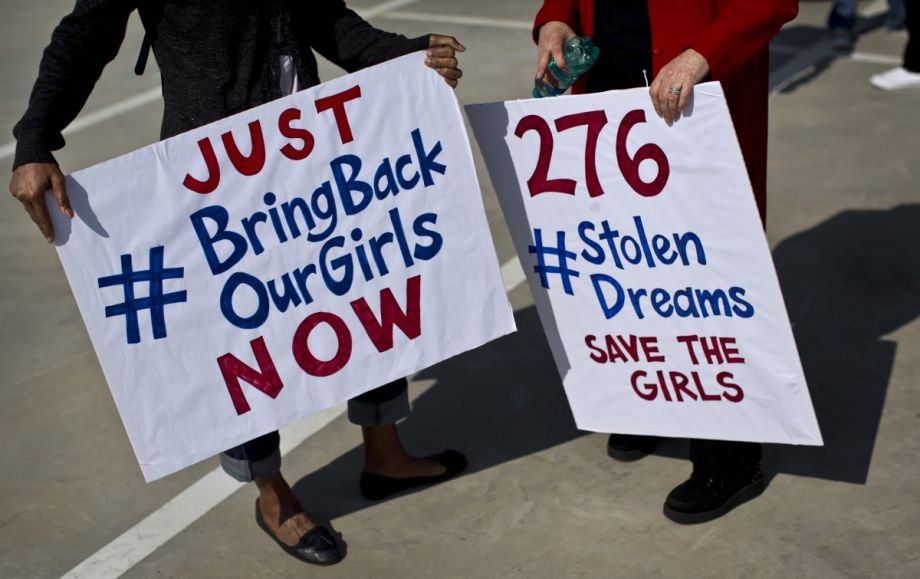
Protesters in Johannesburg on May 8th (AP Photo/Ben Curtis)
Visibility Target: social media users
Potency: Digital spaces bleed into physical spaces every which way you look, but the creation of a hashtag like #ShutItDown — which called protesters to crash the annual Christmas tree lighting ceremony in New York’s Rockefeller Center this week — can have a profound and instant effect on space.
Riots

Following the smashing of banks and stores, riot police spray fire extinguishers at protesters in Mexico City on Dec. 1st. (AP Photo/Rebecca Blackwell)
Visibility Target: people in positions of power
Potency: Urban insurrections have many different causes and vary from place to place and event to event, but acts like looting and rioting often stem from frustration with material conditions, as seen in Ferguson, and also in Mexico City (though corruption and abuse of power are the primary causes there). While riots act as a venting mechanism and get a lot of media coverage, critics often point out that it’s often negative attention.
The Equity Factor is made possible with the support of the Surdna Foundation.

Alexis Stephens was Next City’s 2014-2015 equitable cities fellow. She’s written about housing, pop culture, global music subcultures, and more for publications like Shelterforce, Rolling Stone, SPIN, and MTV Iggy. She has a B.A. in urban studies from Barnard College and an M.S. in historic preservation from the University of Pennsylvania.


